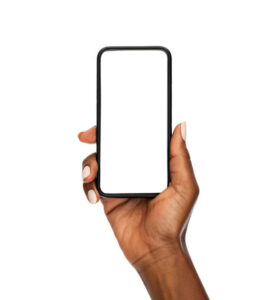Understanding the connection between smartphone use and trigger thumbs

In our modern, technology-driven world, it’s no secret that smartphones have become an indispensable part of our daily lives. From communication to entertainment, we rely heavily on these handheld devices for various tasks. However, as our dependence on smartphones grows, so do concerns about the potential health implications associated with prolonged use. One such concern is the development of trigger thumbs, a condition that can be exacerbated by excessive mobile phone use.
Trigger thumbs, also known as stenosing tenosynovitis, is a condition characterized by the inflammation of the tendons in the thumb, leading to difficulty in bending or straightening the digit. The name “trigger thumb” stems from the snapping or popping sensation experienced when attempting to move the thumb, resembling the action of pulling a trigger.
So, what exactly is the connection between trigger thumbs and mobile phone use? The answer lies in the repetitive motions and awkward hand positions typically associated with prolonged smartphone usage. When we use our phones, we often engage in repetitive thumb movements, such as typing, swiping, and scrolling. Over time, these repetitive actions can strain the tendons in the thumb, leading to inflammation and the development of trigger thumbs.
Furthermore, the ergonomics of mobile phone use can also contribute to the development of this condition. Many individuals hold their smartphones in one hand while using their thumb to navigate the screen. This can result in awkward bending and twisting of the thumb, putting additional strain on the tendons and increasing the risk of developing trigger thumbs.
So, what can be done to prevent or alleviate trigger thumbs caused by mobile phone use? Here are a few tips:
- Take Regular Breaks: It’s essential to take frequent breaks from smartphone use to give your thumbs and hands a rest. Set aside designated periods throughout the day where you refrain from using your phone altogether.
- Practice Good Posture: Pay attention to your hand and wrist positioning while using your smartphone. Try to maintain a neutral wrist position and avoid excessive bending or twisting of the thumb.
- Use Alternative Methods: Consider using alternative methods of navigating your smartphone, such as voice commands or a stylus, to reduce the strain on your thumbs.
- Stretch and Strengthen: Incorporate thumb stretches and strengthening exercises into your daily routine to help prevent trigger thumbs and alleviate discomfort. Simple exercises such as thumb circles and thumb stretches can help improve flexibility and reduce tension in the tendons.
- Seek Medical Advice: If you experience persistent thumb pain or difficulty moving your thumb, consult a healthcare professional for proper diagnosis and treatment. Early intervention can help prevent the condition from worsening and improve your overall hand health.
In conclusion, while smartphones have undoubtedly revolutionized the way we communicate and interact with the world around us, it’s essential to be mindful of the potential health implications associated with excessive use. By being aware of the connection between trigger thumbs and mobile phone use and taking proactive steps to mitigate the risk, we can ensure that our digital habits support, rather than hinder, our overall well-being. So, the next time you reach for your smartphone, remember to give your thumbs a break and practice good hand health habits for a happier, healthier future.


